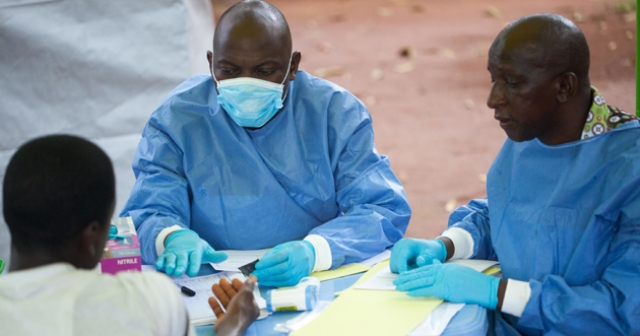Protecting people from disease outbreaks and other health emergencies in Africa and beyond
 Addis Ababa, 20 August 2016 – With more than 100 public health emergencies occurring each year in the African Region, Health Ministers have agreed to implement some key actions to ensure that people in Africa and beyond are better protected from disease outbreaks and other health emergencies.
Addis Ababa, 20 August 2016 – With more than 100 public health emergencies occurring each year in the African Region, Health Ministers have agreed to implement some key actions to ensure that people in Africa and beyond are better protected from disease outbreaks and other health emergencies.
The actions are outlined in the Regional Strategy for Health Security and Emergencies 2016–2020 which has just been endorsed by the Ministers at their annual meeting (Regional Committee), taking place in Addis Ababa from 19-23 August 2016. They agreed among others that by 2018, at least 80% of the 47 countries will have tested and resourced all-hazards preparedness plans, conducted outbreak and disaster risk analysis and mapping in a multisectoral approach, as well as put in place policies and guidelines to support International Health Regulations (IHR) and Disaster Risk Management (DRM) implementation.
“In our globalized world, diseases know no boundaries and there is the need for stronger collaboration to protect national, regional and global health security. The implementation of the regional strategy for health security and emergencies will strengthen the capacity of countries in the Region to prepare for, prevent, detect, respond and quickly recover from emergencies in a predictable, dependable and accountable way,” said Dr Matshidiso Moeti, WHO Regional Director for Africa.
Out of the 100 public health emergencies that occur in the African Region every year, infectious diseases account for 80%, disasters for 18%, chemical poisoning and acute severe malnutrition account for 2%. Antimicrobial resistance (AMR) is another increasingly serious threat to global public health that threatens the effective prevention and treatment of an ever-increasing range of infections.
Inadequate preparedness and response capacities, insufficient resources (financial, human and logistical); fragmented services; limited community engagement; weak health systems; inadequate inter-country collaborations, limited partnerships and lack of IHR core capacities are major contributory factors to these challenges.
It is expected that by 2020, at least 80% of Member States will have a fully functioning public health emergency operation centre (EOC) and a functional national laboratory system and network that meets minimum standards. Over 80% of Member States should have an adequate health work force to respond to outbreaks and health emergencies and at least 90% of Member States should be implementing Integrated Disease Surveillance and Response (IDSR) including event-based surveillance systems with at least 90% country coverage by 2020.
Decisive action is needed now from Member States and their development partners to ensure that this is possible, and that people in Africa and the world are better protected from outbreaks and other health emergencies. The establishment of resilient health systems that can withstand the shock of disasters and potential damage from emergencies will be essential.
__________________________________
For more information, please contact:
Dr Ibrahima Soce-Fall, Regional Emergency Director, WHO African Region , socef [at] who.int , Tel +47-241-39695, +242065104619
Collins Boakye-Agyemang, Regional Communications Adviser; Tel: + 242 06 520 6565; Email: boakyeagyemangc [at] who.int
Loza Mesfin Tesfaye, Communications Officer, WHO AFRO; Tel: +251 911 144 194; Email: tesfayel [at] who.int
Fabienne Aboua, Communications Officer, WHO AFRO; Email: abouaf [at] who.int
Pieter Desloovere, Communications Consultant, WHO AFRO; Email: deslooverep [at] who.int
AFR/RC66/6 Regional strategy for health security and emergencies


